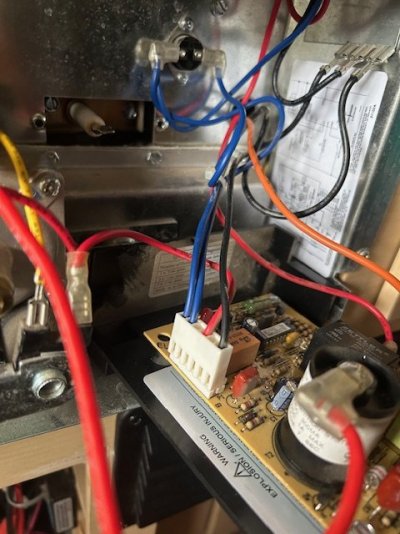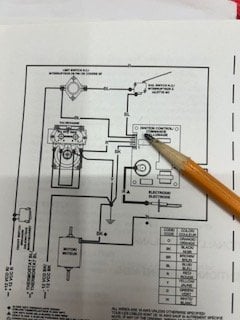ATWOOD HYDROFLAME 700-II & 8012-II ELECTRICAL DIAGNOSIS
This is a follow - up on my original post regarding diagnosing an ATWOOD heater before replacing parts. This is my assessment and based on the installation/operation manual and troubleshooting my own furnace. Note, there are warnings in the manuals not to do your own troubleshooting and repairs. You could damage your furnace by conducting your own repairs. (I sound like a lawyer!) I am not an expert on ATWOOD furnaces other than I have electrical engineer degree, was in the Navy for 25 years and I'm an opinionated old man!
It appears that newer versions of the ATWOOD heater use the same logic and electric system....however I cannot confirm. I'm happy to get feedback or be told I'm incorrect with anything in this and follow-on posts
So let's get started.
I will divide this into three posts:
> ATWOOD FURNANCE and POWER
> Safety CKT (Limit Switch and Sail Switch)
> Propane and ignition
The sequence of the ATWOOD furnace to provide heat is:
- Power - (11-13.5 volts)
- Not too hot? = limit switch
- Air Flow ok? = sail switch
- Turn on propane
- Start igniter
I'll discuss power diagnosis and requirements first.
ATWOOD FURANCE and POWER:
To troubleshoot the furnace you will need three items. Multi-meter that can read direct 12Volts and continuity (Is the ckt on or off?), the tech manual (specifically the Wiring and Ladder diagram) and a 1/4 socket wrench. I suggest turning off 12Volts to the furnace via the main CKT breaker for the camper or pulling the blade fuse associated with the furnace.
Safety - 12Volts won't shock you....however the ignition to the electrode that creates a spark likely will. Don't touch the round black device on the ckt board with a red wire on top that connects to the electrode!
To open the furnace you can turn the grommet on the bottom of the furnace face 1/4 either way and pull out from the bottom.
Once open, the circuit board for the furnace is on the bottom right and has the sticker "ATWOOD MOBILE PRODUCTs". To access the board remove the 1/4 inch screw on the top and tilt the board outwards.
The manual states that the ATWOOD heater will operate with a voltage between 11V to 13.5V. To assess your current voltage available either measure the battery voltage using the multi-meter or via the display panel for your FWC.
Next step is to take a look at the wiring diagram to determine if your furnace is "seeing" the voltage provided by your camper.
I have highlighted the two sources of 12V for the furnace on the wiring diagram. One is to the ckt board and the other is via the thermostat.
- Note, the requirement of the thermostat is 1AMP. If you have installed a new thermostat and that is not capable of 1AMP that could be an issue. (You can just connect the two wires on the back of the thermostat if you think that is a problem and see if the furnace works).
"On/Off Switch breaker" - You'll see on the wiring diagram on the left side the On/Off Switch breaker.
If is marked with"off" and "reset". The operating position is "reset." This switch/breaker "trips" if there is a short and to reset it you can cycle it to "off" and back to "reset." Note, your furnace may appear to operate with this switch is in the "off" position since there is another source of 12V being provided via the thermostat. In my opinion, the manual doesn’t explain that this switch should be normally set to “reset.” This could be a source of some folks issue that assume otherwise.
Trouble shooting power:
- Turn the main ckt breaker for the FWC back on or replace the blade.
- Cycle the furnace switch to "off" then back to "reset"
- Turn the thermostat on (switch to heat, auto and set temp above ambient)
- Measure voltage at two locations (red wire on the ckt board and both sides of the limit switch). Place the red multimeter wire on the location and black on metal frame of the furnace. The voltage should be the same as your battery or close.
Note: Test both sides of the limit switch. If one side has no volts then the limit switch may be faulty. (I'll go into detail on the next post). For the red wire, you may have to slip to multimeter probe into the plastic.
- Limit SWITCH voltage: If the voltage is zero or significantly less than your battery voltage then you may have a thermostat problem. Once again, you can remove your thermostat and connect the two wires to test.
- Power to the CKT Board (red wire): Should read same as battery voltage. If not, then On/Off breaker may not be in the correct position or the camper blade breaker has tripped.
I have read some of you have experienced the the furnace going through a normal sequence and then turning and then have the flame immediately go out. Based on the wiring diagram this could be caused by the switch/reset breaker being in the off and the power being provided by the thermostat 12V. This is only a guess since I don't have details on how the ckt board is wired. Make sure your switch is in the "reset" position.
Next post to follow will go into detail on diagnosing electrical safety features of the sail switch, limit switch and diagnostic led indications.














